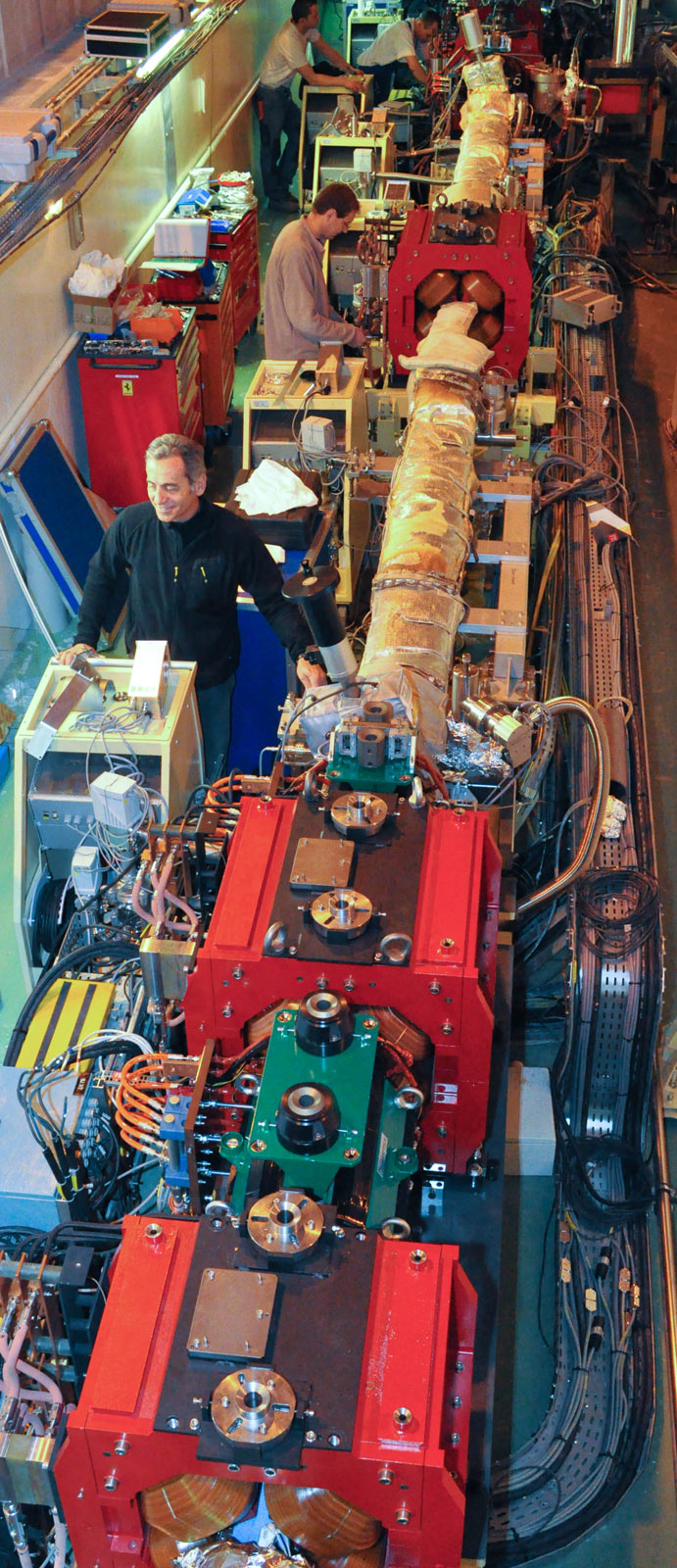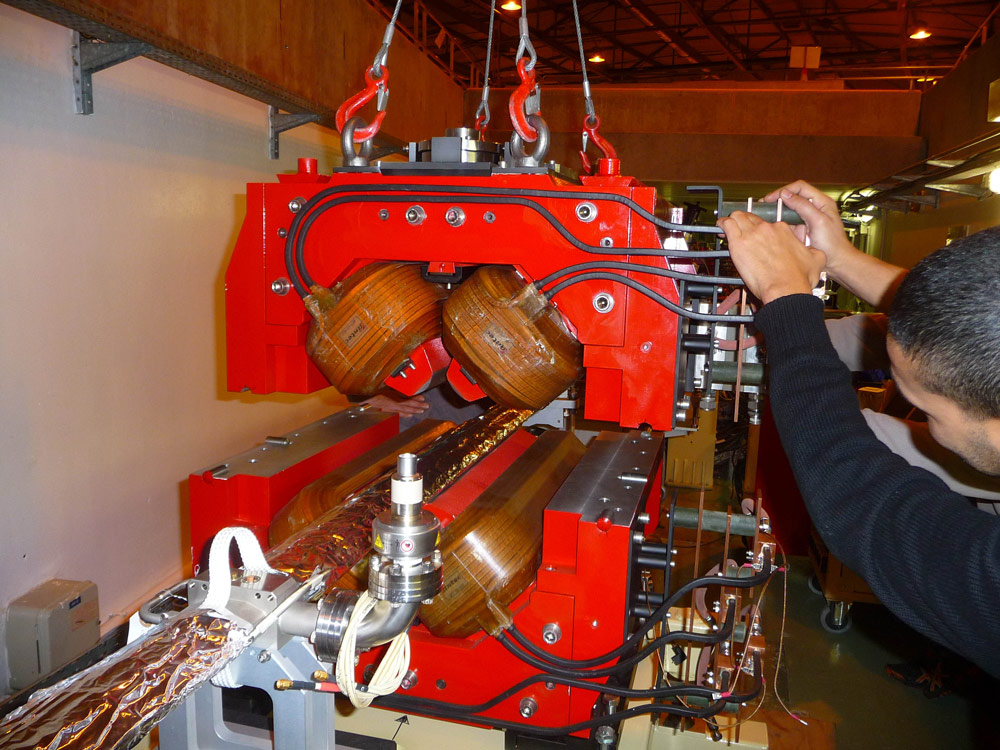- Home
- News
- General News
- Successful installation...
Successful installation of the first 7-metre straight section in the ESRF storage ring
15-01-2013
The straight section on ID23 is the first at the ESRF to be lengthened from 5 metres to 7 metres as part of the ongoing upgrade of the accelerator complex.
Since 2006 the ESRF has operated with a 16-fold storage ring lattice that no longer uses the quadrupole magnets located on each side of the 32 straight sections. These quadrupoles have been removed from eight insertion device (ID) straight sections and the extra space available has enabled the straight sections to be extend from 5 metres to 6 metres.
To further lengthen an ID straight section, a local modification of the optics is required, as well as the installation of new shorter and more powerful quadrupoles. But a modification of the optics in one cell breaks the original symmetry of the storage ring, which has, until now, operated with 16 identical superperiods. The asymmetry of the lattice may enhance the sensitivity of the machine to magnetic imperfections; however thorough studies showed the asymmetry would not affect the lifetime.
The extension of the ID23 straight section required a large amount of preparation during the months prior to the four-week shutdown of the accelerator complex, from mid-December to mid-January, when the installation was finalised.
 |
The first 7-metre straight section during installation on ID23 in January 2013. |
Optics are controlled at the level of the cell
New high gradient quadrupoles (25 T/m) were designed. Two shorter girders supporting two quadrupoles and two sextupoles were pre-assembled, measured and adjusted in the autumn and have now replaced those on either side of the straight section. These magnets are equipped with independent power supplies that provide control of the lattice over the cell, rather than over a whole magnet family as in the past.
 |
Installation of a high gradient quadrupole magnet on ID23. |
New vacuum chambers and associated mechanical supports and new chicane magnets were also mounted on this section during the shutdown.
The machine was restarted on 17th January without any major difficulties. Conditioning was carried out over four days and beam parameters rapidly reached nominal values despite the large number of modifications induced by this project. User service mode resumed, as scheduled, at 8 a.m. on 22nd January.
Preparation for the future
Two identical 1.6 metre-long canted undulators were re-installed for the ID23 beamline. The space between the two undulators will accommodate three single cell RF cavities, scheduled for installation during the summer 2013 shutdown. This modified configuration of RF cavities provides grounds for the creation of new beamlines on sectors currently occupied by the present five-cell RF cavities.
Until the RF cavities are housed on ID23 during the summer 2013 shutdown, an additional quadrupole will be installed in the space available and powered only during machine dedicated studies. The aim is to test the possibility of splitting a long straight section into two halves with a small vertical β lattice of 1.5m in the middle of each half. This mini-beta configuration introduces the potential, for the future, of reducing the undulator gaps down to 4mm. These tests will enable the ESRF to measure the impact of this major change to storage ring optics on machine performance, especially on its injection efficiency and lifetime.
This extensive project, which included reconstructing part of an arc of a cell, as well as the whole straight section, was also an excellent exercise in view of future works towards a new storage ring lattice.
Text by Kirstin Colvin
Top image: 3-D model of new design, high gradient quadrupole installed at ID23. Credit image: G. Le Bec, ESRF.



